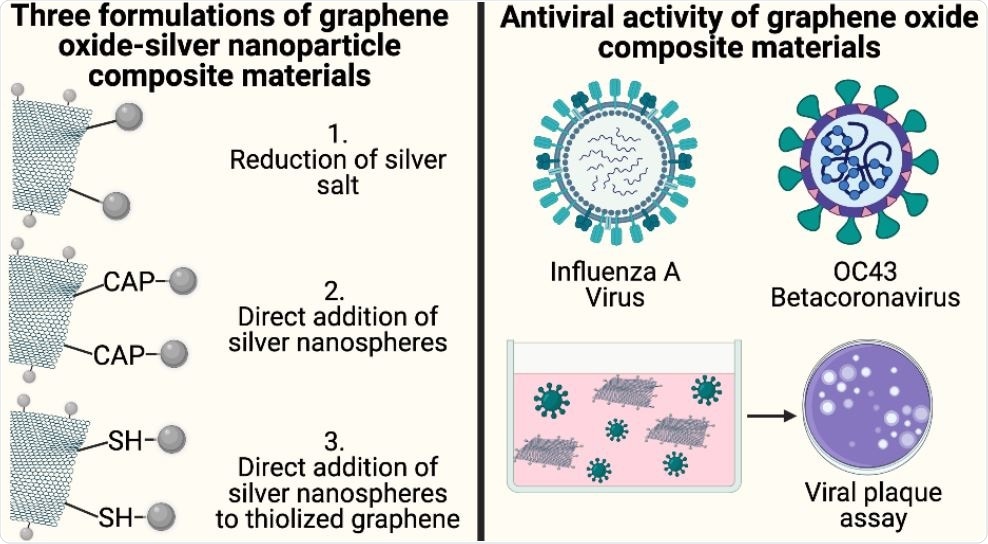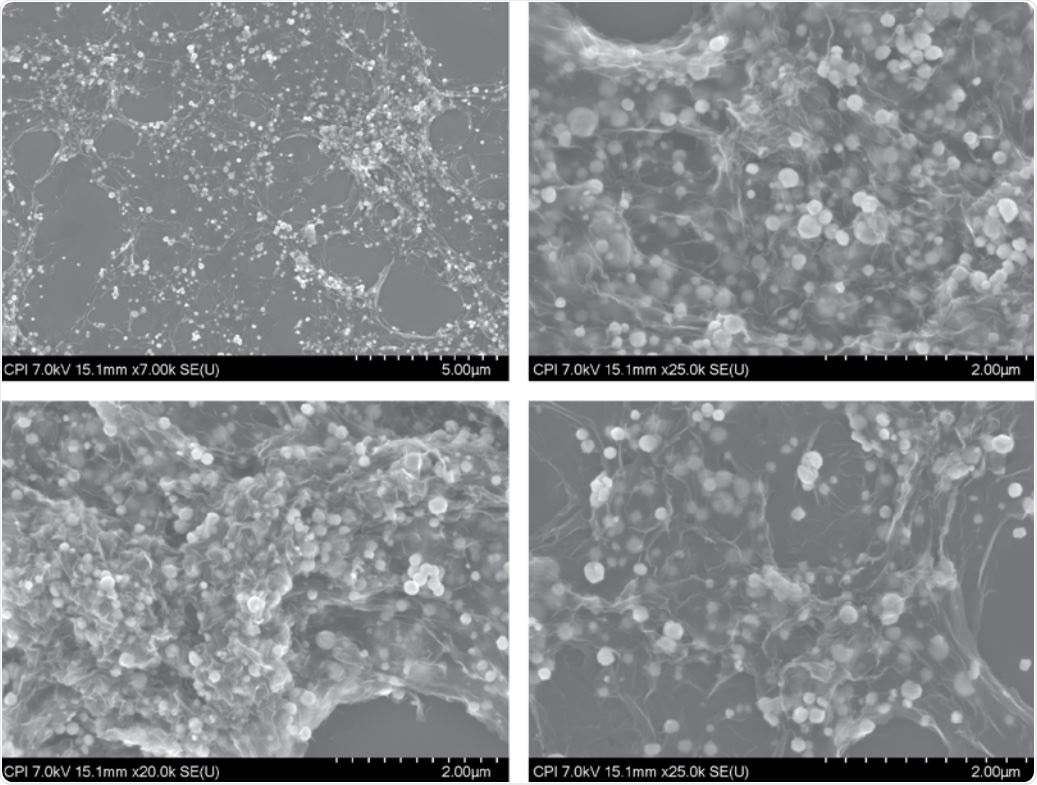Go silver nanopart.shown to neutralize RNA viruses.
posted on
Jul 03, 2021 10:19AM

Hydrothermal Graphite Deposit Ammenable for Commercial Graphene Applications


While the vaccines against severe acute respiratory syndrome coronavirus 2 (SARS-CoV-2) are administered, and extensive research is conducted for targeted therapeutics to control the COVID-19 (coronavirus disease 2019), it is equally crucial to develop more novel, broad-spectrum antiviral compounds.
Silver nanoparticles (AgNP) are well-established as antibacterial and antiviral agents. Another nanomaterial - graphene oxide (GO) - is also effective against microorganisms. Coupled with its high surface area, it acts as a potent ideal drug carrier. With high levels of antiviral agents, the combination with graphene oxide is found to show higher antiviral performance and reduced toxicity.
While many groups have investigated graphene oxide and silver nanoparticles, a recent study examined the antiviral properties of GO-AgNP composite materials developed by Graphene Composites as part of their patent-pending GC Ink antiviral formulations.

Researchers from Brown University, Rhode Island, and Graphene Composites Ltd., UK, collaborated to formulate a graphene oxide/silver nanoparticle ink with antiviral properties.
According to the study, the researchers generated various materials using three different production methods: reduction with silver salt, direct addition of Ag nanospheres, and direct addition of Ag nanospheres to thiolized graphene.

Followed by characterization of seven materials to test for the infectivity of two RNA viruses, influenza A virus (IAV) and the human coronavirus (HCoV) OC43, after short exposure periods, the researchers found that the composite with Ag nanospheres (that was added directly) completely reduced the viral infectivity.
The IAV is an enveloped virus of the orthomyxovirus family with a segmented single-stranded RNA genome; it causes flu pandemics. The HCoV-OC43 is an enveloped betacoronavirus with a single-stranded RNA genome associated with the common cold in humans. The researchers have used these viruses as representatives of viruses that circulate seasonally, such as the seasonal influenza viruses, and those with novel introductions into the population with pandemic potential, as experienced with the novel 2009 H1N1 influenza A virus lineage and the coronavirus SARS-CoV-2, the viral agent of COVID-19 disease.
The researchers found the antiviral activity consistent with the chemical and morphological differences in the materials, specifically the stabilization of the AgNPs, which is aided by a capping agent's presence. The researchers discussed the oxidation state, reactive surface groups of the GO and the size of the AgNPs.
The study identified two GO-AgNP materials with potent and rapid antiviral activity in solution against two enveloped RNA viruses associated with human respiratory infection. The remaining five materials possessed a range of modest to no antiviral effects against IAV, the researchers reported.
This study has reported a synergistic effect between the GO and the AgNPs. Most likely the mechanism of action may be by the rapid disruption of the viral envelope.
As opposed to targeted drugs, non-specific antivirals are advantageous. They act broad-spectrum; thus, the mutational variants are also killed. With new epidemics emerging in short periods, this formulation will be useful. With no or reduced toxicity, the formulation holds high promise and calls for further research to warrant it.
The SARS-CoV-2, the etiological agent of COVID-19, has infected over 114 million lives and caused over 2.53 million deaths, according to WHO reports. The need for an effective and successful therapeutic option is urgent - a broad-spectrum antiviral may fit the bill. This study here has revealed the potential for the GO-AgNP composite materials to function as antiviral nanosystems that may enhance current infection prevention measures and antiviral therapies, the researchers write.